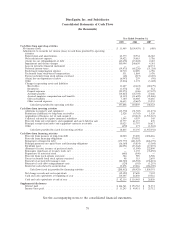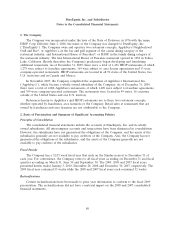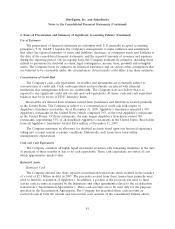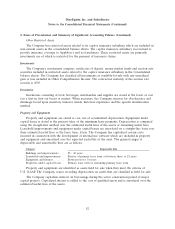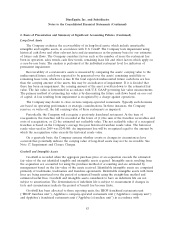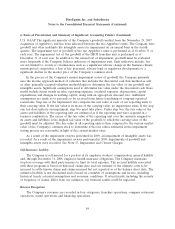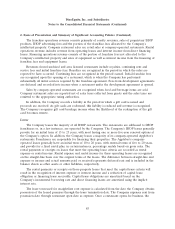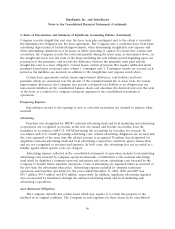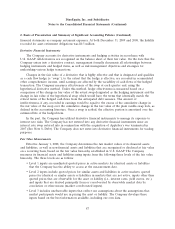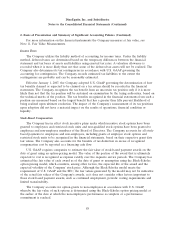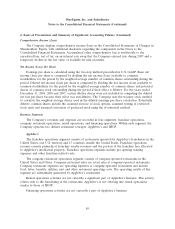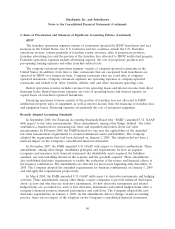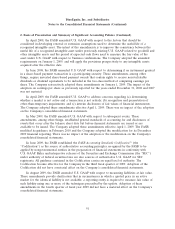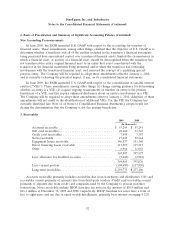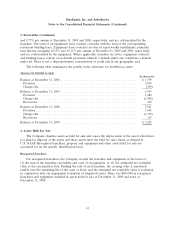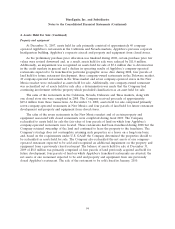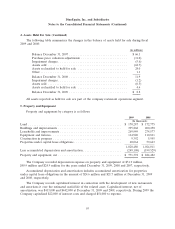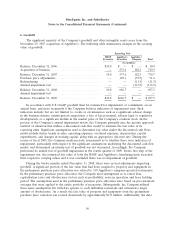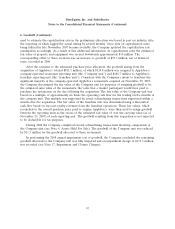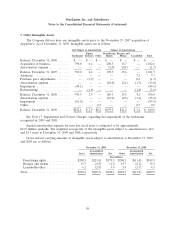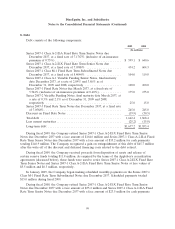IHOP 2009 Annual Report Download - page 108
Download and view the complete annual report
Please find page 108 of the 2009 IHOP annual report below. You can navigate through the pages in the report by either clicking on the pages listed below, or by using the keyword search tool below to find specific information within the annual report.DineEquity, Inc. and Subsidiaries
Notes to the Consolidated Financial Statements (Continued)
2. Basis of Presentation and Summary of Significant Accounting Policies (Continued)
Comprehensive Income (Loss)
The Company displays comprehensive income (loss) in the Consolidated Statements of Changes in
Shareholders’ Equity, with additional disclosure regarding the components in the Notes to the
Consolidated Financial Statements. Accumulated other comprehensive loss is attributable to the
unrealized loss, net of tax, on an interest rate swap that the Company entered into during 2007 and a
temporary decline in the fair value of available-for-sale securities.
Net Income (Loss) Per Share
Earnings per share is calculated using the two-step method prescribed in U.S. GAAP. Basic net
income (loss) per share is computed by dividing the net income (loss) available to common
stockholders for the period by the weighted average number of common shares outstanding during the
period. Diluted net income (loss) per share is computed by dividing the net income (loss) available to
common stockholders for the period by the weighted average number of common shares and potential
shares of common stock outstanding during the period if their effect is dilutive. For the years ended
December 31, 2009, 2008 and 2007, certain dilutive shares were not included in computing the diluted
net loss per share because their effect was anti-dilutive. The Company uses the treasury stock method
to calculate the weighted average shares used in the diluted earnings per share calculation. Potentially
dilutive common shares include the assumed exercise of stock options, assumed vesting of restricted
stock units and assumed conversion of preferred stock using the if-converted method.
Business Segments
The Company’s revenues and expenses are recorded in four segments: franchise operations,
company restaurant operations, rental operations, and financing operations. Within each segment, the
Company operates two distinct restaurant concepts: Applebee’s and IHOP.
Applebee’s
The franchise operations segment consists of restaurants operated by Applebee’s franchisees in the
United States, one U.S. territory and 15 countries outside the United States. Franchise operations
revenue consists primarily of franchise royalty revenues and the portion of the franchise fees allocated
to Applebee’s intellectual property. Franchise operations expenses include pre-opening training
expenses and other franchise-related costs.
The company restaurant operations segment consists of company-operated restaurants in the
United States and China. Company restaurant sales are retail sales at company-operated restaurants.
Company restaurant expenses are operating expenses at company-operated restaurants and include
food, labor, benefits, utilities, rent and other restaurant operating costs. The operating results of this
segment are substantially generated by Applebee’s restaurants.
Rental operations activities are not currently a significant part of Applebee’s business. This activity
relates only to the franchising of the restaurants; Applebee’s is not entering into rental operations
similar to those of IHOP.
Financing operations activities are not currently a part of Applebee’s business.
89


